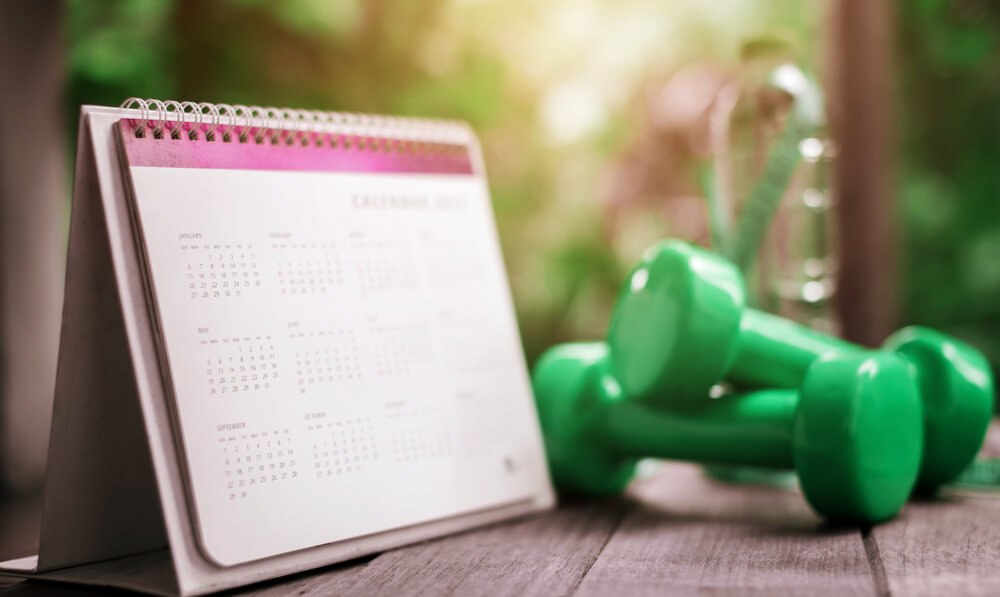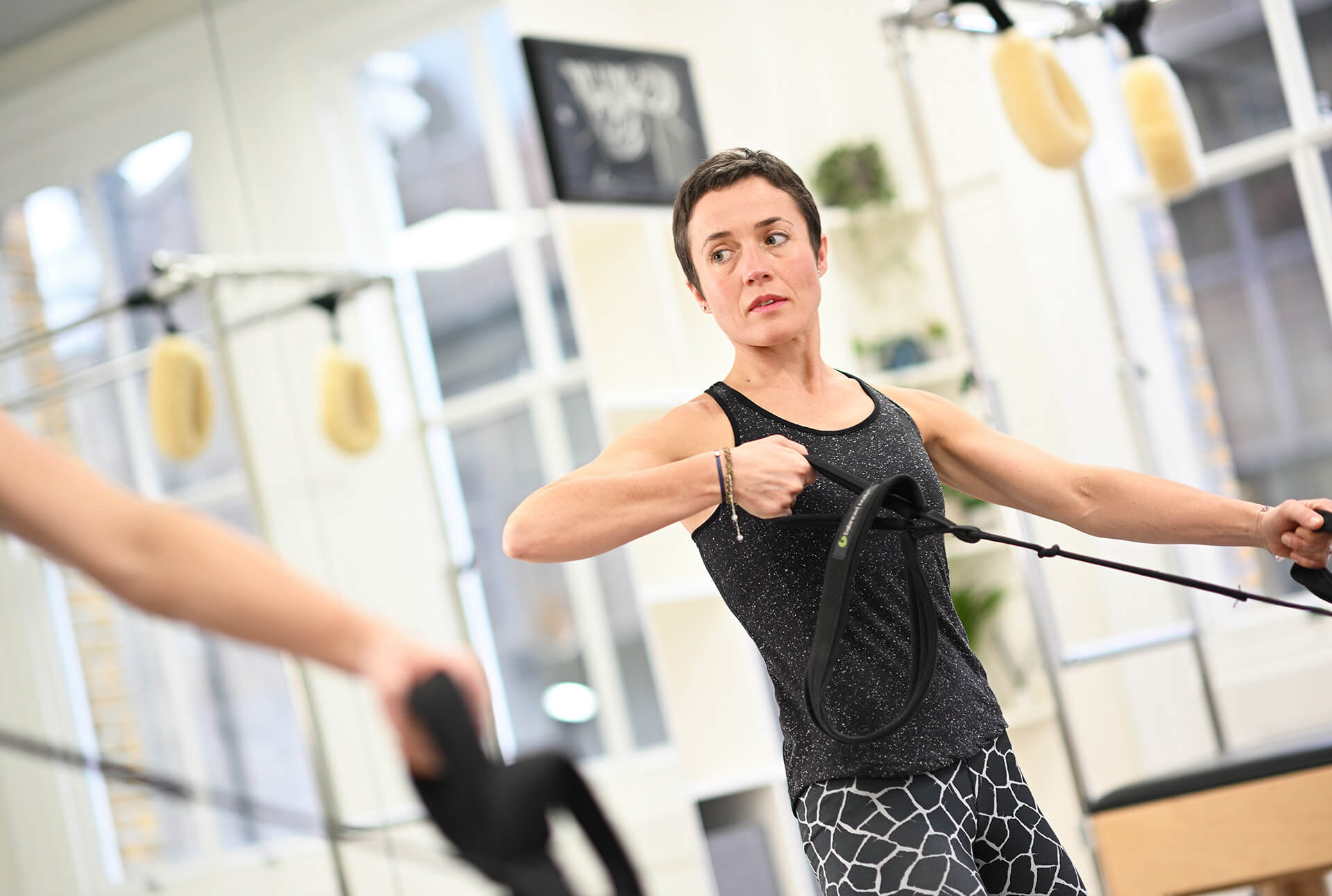Author: Kelly Greacen is a chartered physiotherapist and Polestar certified Pilates instructor. She has special interests in ergonomics and women’s health.
Do you struggle to find a comfortable position at your desk? Do you suffer from back or neck pain at work? Are you wondering if Pilates can help improve your posture ?
Read on to find out our top tips for setting up your office ergonomically. Plus, some great Pilates exercises to combat your back and neck pain and improve your posture!
Since the outbreak of Covid in 2020, the number of people working from home or working in a hybrid setting has increased significantly, and for many, there is no turning back.
The office has become an integral part of the home, and long gone are the times where we thought a couple of weeks on the dining table, or an ironing board desk would see us through!
Working long hours at a desk means that an ergonomic home office setup is key to preventing back and neck pain.
An ergonomic set up for desk should include:
- An ergonomic desk chair
- Correct desk sitting ergonomics
- Adjustable screens
- Ergonomic keyboard and mouse
- Standing desk
- Suitable environment
Top tips for setting up your office chair ergonomically
A supportive office chair is an important component in an ergonomic home office setup. The following checklist will help when it comes to evaluating your current chair or help guide you when looking for a replacement.
- Make sure you can sit with your bottom all the way to the back of the chair. When you do this, check that your feet reach the floor.
- Check if your chair has a built-in lumbar support (an inwards curve in the chair which helps to support your lower back). Make sure the lumbar support actually sits where it is supposed to i.e in the small of your back.
- To know if the height of the chair is correct, look at the angle between your hips and knees. Try to sit with your hips slightly higher than your knees, which will help to reduce strain on your lower back.
- Assess the base of your chair. Is it deep enough to support your thighs? It’s important that when your bottom is all the way to the back of the chair, you have a small gap between the edge of the chair and the back of your knees so that the chair does not compress or restrict blood flow. Note some chairs have an adjustable base function. If you are particularly small or large then consider buying a chair with this function.
- Top tip -If you are buying a new office chair, try to choose one that has many adjustable functions. This will allow you to customise the chair to your body

Ergonomic desk setup
Correct desk sitting ergonomics are important for preventing back and neck pain. The main things to consider when analysing your desk are; the height of the desk, and how deep the desk is.
Make sure your desk is deep enough to provide support to your forearms, and that your elbows are not hovering in mid-air. Check your desk is free from clutter – both on and under.
How to know if your desk height is correct for you?
When sitting or standing, the desk should be set at a height where your shoulders can rest in a comfortable position and your elbows at a 90-degree bend with your forearms supported on the desk.
- If your space and budget allows for it, strongly consider a sitting to standing desk – more on this to come.
How to set up computer screens ergonomically
Having your computer screens set to the correct height and orientation is one of the biggest things you can do to ensure proper desk posture for neck pain and headaches. The following checklist will help you to identify if your screen set up is accurate for you.
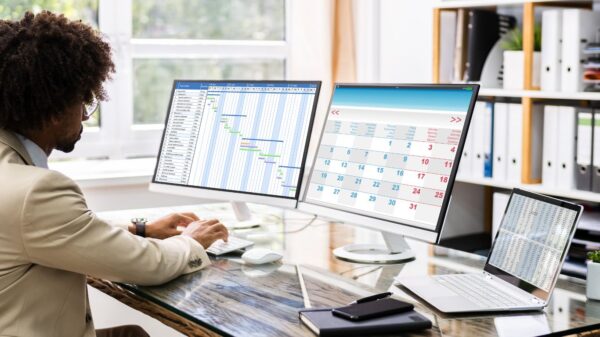
Firstly, take note of how many screens you have. These days, it is common for people to have more than one screen. To set them up well, it’s important to understand how you interact with these screens.
If you find you have a ‘primary screen’ (one that you spend most time on), then it’s best to place this screen directly in front of you. You can then place the secondary and/or tertiary screens to the side. These secondary and tertiary screens may contain material that you refer to every now and then while completing the main work on the screen in front.
Having your primary screen placed directly in front of you will help to prevent your head slightly turning to the side, or your spine rotating for prolonged periods of time. This may not seem like a big deal, however, prolonged and repetitive periods of this will soon lead to back and neck pain.
Consider how high your screens are. Ideally the top of your screen should align with your eyes. This will help to keep your neck in a relaxed position.
How far away are your screens? Your screens should be set up so that once you are in a supported sitting position close to the desk, it should be about an arms distance away. In particular, you want to avoid having your screen too far away as this tends to make you lead forward and poke your chin out.
On this note, if you are unable to bring your screen any closer, or if you have reduced eyesight, then consider enlarging the font on your computer.
Ergonomic desk setup:Is it okay to use a laptop?
Laptops are fantastic for on the go work, however, they are not great for prolonged use. This is because the screen and keyboard are connected. As a result, if you have the keyboard at the correct height you will get neck pain from constantly looking down.
On the other hand, if you have the screen of the laptop set to the correct height, you are going to experience shoulder, neck, and arm pain from having to constantly keep your arms elevated.
If a laptop is your only option, consider investing in a laptop stand and an external keyboard and mouse to get around this.

Ergonomic desk set up: Other things to consider
Small props can be added to the workstation. These will vary from person to person and will be dependent on your body’s needs, as well as the type of tasks your work involves.
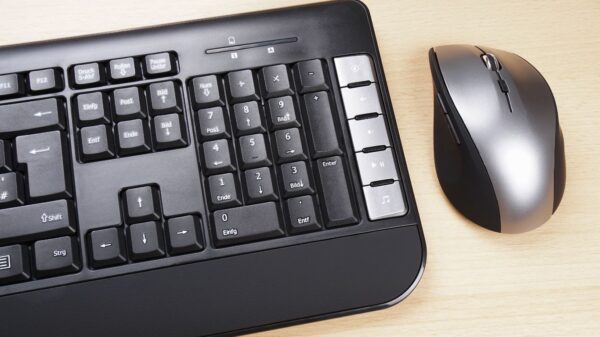
External keyboards and mouse
When selecting a keyboard, consider what tasks you use it for. If you rarely use numbers, then a keyboard with a number pad on the right-hand side may not be right for you.
If you are using a mouse for prolonged periods then it may be worth considering an ergonomic mouse. This will help place your shoulder, elbow and wrist in a ‘more neutral’ position.
When to use a footstool?
Footstools can be a great addition for people small in stature. If you are unable to lower the height of your desk, you can use a foot stool to ‘raise the height of the floor’.
This allows you to have the correct set up for your head, neck, and shoulders, while still allowing you to sit with your feet flat on the ground.
Document holders
Document holders can be a great addition if your work involves reading papers, or inputting information from paper to the computer. Having a document holder allows you to read off the paper without having to look down repetitively or for prolonged periods of time.
Ergonomic desk set up: Are standing desks good?
Sit-to-stand or standing desks are a brilliant way to combat some of the aches and pains that come with prolonged sitting. However, the set-up is just as important as your sitting desk. As mentioned in the desk set up above, make sure the desk is set up to the height where you can rest with your elbows at 90 degrees, and your shoulders relaxed.
Check that the top of the screen is in line with your eyes. Note that this position may be different to your sitting position and will depend on your leg:torso ratio.
While standing, use this as an opportunity to move – scrunch your toes, rise up and down on your heels, or even do a few squats. The best posture is your next posture, so although sit-to-stand desks are amazing, make sure to mix up your positions throughout the day and vary between sitting and standing.
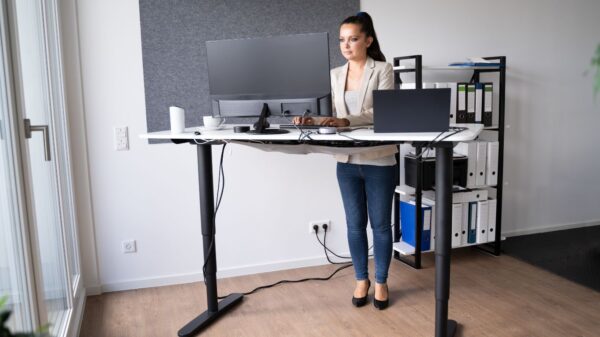
What is the best environment to work in?
So far we have discussed the material objects of your ergonomic desk set up. However, it’s also important to consider your environment.
Do you have natural light? Unfortunately, this is not always available, especially if you live and work in a place like London. If natural lighting is not great, make sure you have sufficient artificial lighting.
Consider taking a break for lunch to walk outside and soak up whatever natural light you can. This can also help with regulating your circadian rhythm and help achieve better quality sleep at night.
Notice if there is any glare on your screen? Glare can lead to squinting which will cause a tightening up of the muscles around your face and neck, and means you are more likely to poke your chin forwards.
Loud noise tends to have the same effect, so if noise is an issue, consider wearing noise canceling headphones.
Finally, look at the space around you. Get rid of any clutter or things you don’t need on or under your desk. It’s important that you are not compromising your set up for the sake of your gym bag stashed underneath your feet.
Can Pilates help reduce my pain and improve my posture?
The human body was never designed to be sat at a desk for hours on end. Regular micro breaks, and physical activity outside of the workplace are important for maintaining all over health and fitness.
Pilates is an amazing way to counteract some of the aches and pains that develop as a result of sedentary work.
Many Pilates exercises focus on building core strength and strengthening the posterior chain (aka the muscles on the back of the body), which don’t often work while sitting. In addition, Pilates is great for lengthening the hip flexors, hamstrings, and chest, all of which get tight when sitting at a desk for long hours
Here are our top 5 Pilates exercises for sedentary workers:
Pilates Dart
Pilates Mermaid
Thread the needle
Hip flexor stretch
Bridge
For exercises you can do sitting in your office chair – check out our blog on working from home
Feeling inspired?
If you want to experience the Complete difference and discover the benefits of one-to-one Pilates, book a session at one of our London studios or online today.
Our Pilates studios in Chelsea our Angel Pilates studio and our Pilates studio in City, offer a highly tailored approach to your Pilates training, whether your goal is to manage a health condition, rehabilitate from an injury or to improve your strength and fitness.
Get in touch with us via email or contact us on 0203 764 5668 for further information.
These blogs are designed to give information to everyone, however, it is important to remember that everyone is different! If you have not seen one of our therapists and have any questions about injuries, what you have read or whether this may be useful to you, please just ask. We are more than happy to help anyone and point you in the right direction. Our biggest belief is that education is key. The more you understand about your injury, illness and movement, the more you are likely to improve.





